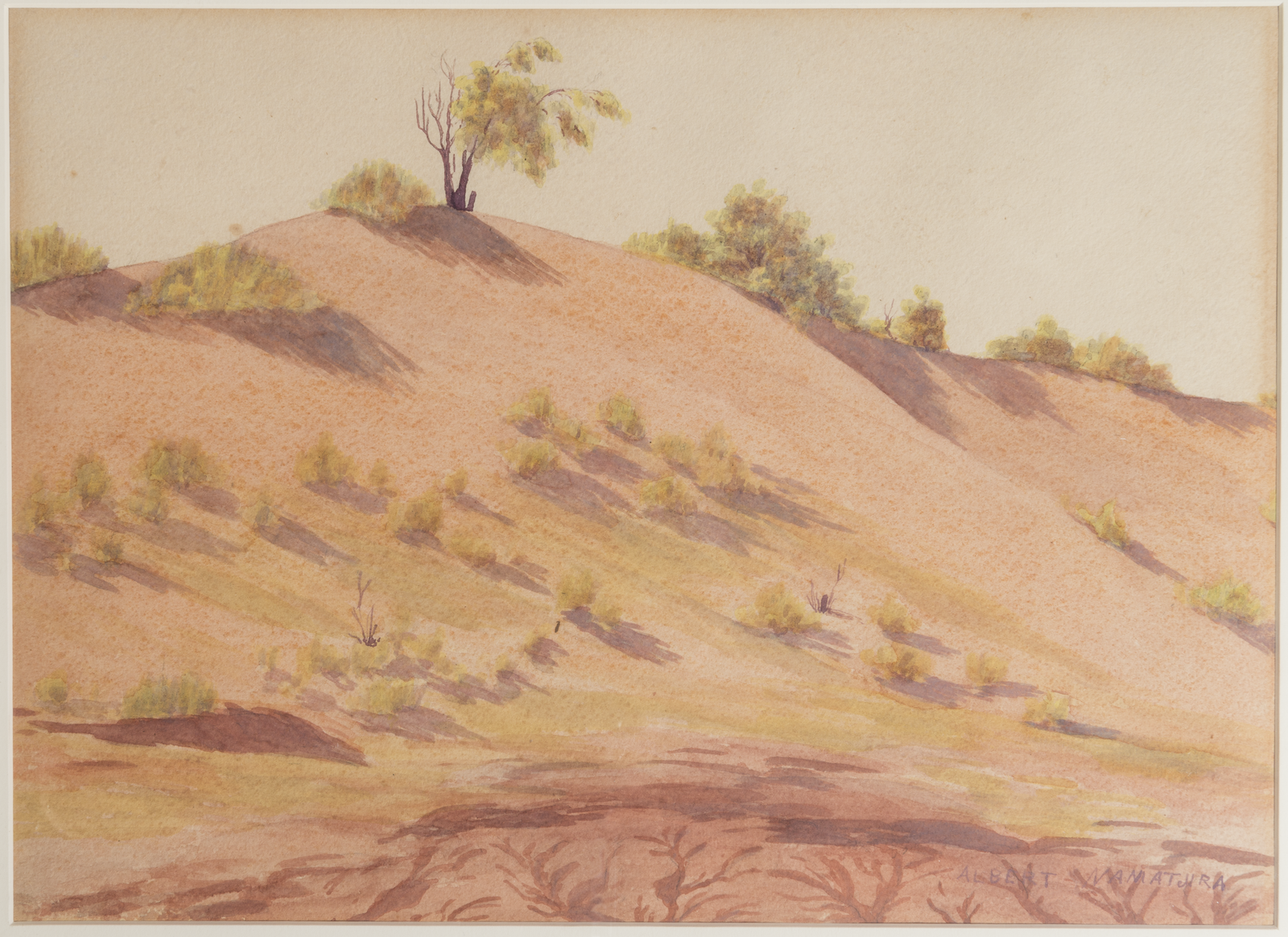Our Global Neighbours: Albert Namatjira
Albert Namatjira (1902-1959) is best known for his exquisite watercolour paintings of central Australian landscapes. But the legacy of his work and life is far greater, although frequently overlooked.

© Australian Museum
He was the first successful Aboriginal artist, Arrernte man, to become commonly known in the country. He was the first Aboriginal person, with his wife Ilkalita (Rubina), granted Australian citizenship, ten years ahead of the 1967 referendum. However, his life as an Aboriginal man and artist exemplify deep racial inequality and attitudes that sadly linger in our nation to the present day.

© Wikimedia Commons
Awarded Queen Elizabeth II's coronation medal in 1953, Namatjira met the Queen in Canberra a year later. He was elected an honorary member of the Royal Art Society of New South Wales in 1955. His name was included in Who's Who in Australia and was the first named Aboriginal Australian depicted on a postage stamp.
He adopted a European form of painting which is sometimes questioned as not fully original or fully indigenous. Yet Herbert C Coombs (Nugget) asserted that the interaction between the European and Australian indigenous artistic traditions could produce "a renaissance potentially as significant for Australian life as that which was launched upon Europe by the spread of 'new knowledge' from Constantinople in the sixteenth century". Eventually it was Aboriginal ‘style’ and content that captivated art lovers, literati and ordinary people around the world.
Hetti Perkins, Aboriginal art curator-writer, and author Christine Williams show that the extraordinary success of the Papunya art movement benefited directly from Namatjira’s achievement and legacy. He set the foundation for the recognition of Aboriginal art in Australia and, even more so, internationally. Also, through his art and life, he set an example and a tone of the Aboriginal rights movement – dignified and persistent.
Namatjira’s landscape-paintings are in the European style, but infused with knowledge, love and understanding of his country unparalleled for its time and aesthetic quality.
Explanation:
Herbert Cole "Nugget" Coombs (1906–1997) was a high level public servant, adviser to Prime Minister Gough Whitlam, Chancellor of the Australian National University and chairman of the Australian Council for Aboriginal Affairs, among many roles he played in Australian public, political and cultural life in Australia.
References:
Herbert C Coombs. 1986, Introduction Albert Namatjira: The Life and Work of an Australian Painter. Macmillan Melbourne.
Hetti Perkins. 2004. Foreword, Papunya A Place Made After the Story. Miegunyah Press (MUP) Melbourne.
Christine Williams. 2006. Green Power: Environmentalists Who Have Changed the Face of Australia. Lothian Books.


